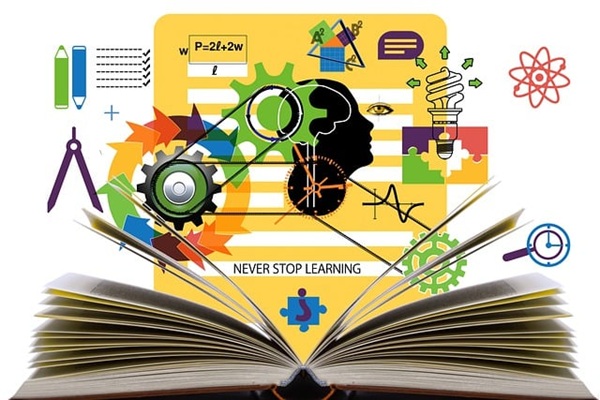Every classroom can be a science classroom

Learning science through interdisciplinary approach
Creativity, innovation and design thinking are not only needed in creative disciplines, but are key skills needed for science, technological and engineering careers. Creativity also enhances critical thinking skills, which are essential for learning and mastering science, technology, engineering and mathematics (STEM) subjects.
The first addition to this idea folded Arts into STEM as STEAM. But an alternative version of this has emerged: STE(A)M, where A stands for ‘all other subjects’, opening the door to even broader cross-disciplinary teaching.
Both approaches emphasise creativity and innovative thinking and connecting learning with real-life examples, by applying methods like problem- and inquiry-based learning. They also promote the inclusion of learners who may not find traditional science teaching engaging and therefore help address gender and diversity gaps.
Whether your subject is STEM or something else, take a look at these examples on how to apply an interdisciplinary approach in your lessons.
Arts
Combining STEM with arts has multiple options depending on the art forms applied, such as visual arts, performing arts or crafts. While it can be more demanding to plan STEAM lessons, the results can be rewarding, keeping all learners engaged.
Music and movement
Pupils can learn about STEM subjects using music and dance as tools for comprehension and memory. One way to get started is to ask pupils to choreograph a dance in which they reproduce graphs of mathematical functions.
In this other example, the EU-funded iMuSciCA project created an interactive online environment for activities that combine science and music. Related learning scenarios give guidance for truly interdisciplinary lessons, such as creating a piece of music using geometric symmetries.
Visual art
Pupils get the opportunity to think more deeply about how things are physically linked in systems and use that knowledge to create something.
- ‘Shedding light on a Picasso’ activity (for age 11–16 years) combines chemistry, physics and art to show how artworks are investigated without getting damaged. The lesson plan explains how different light wavelengths allow us to study layers of artworks and includes a practical activity for pupils to practice what they learned.
- When combining geometry and visual arts pupils explore shapes, angles, proportions and spatial reasoning. This cross-disciplinary approach fosters creativity and problem-solving – and results in beautiful artwork or 3-D ornaments!
Theatre
Through role-play, storytelling and performance, drama-based methods encourage learners to explore how science operates in the real world and its impact on society.
- In the ‘lifecycle theatre’ activity teachers give pupils a short presentation of the life cycle of a butterfly, frog, or another animal, after which pupils work in groups to prepare a skit based on the animal’s life cycle to present in the next class.
- ‘Atomic actors’ physically represent how atoms combine to form a molecule: each pupil represents one of the subatomic particles (electrons, protons or neutrons) and together they act out the structure of different atoms, showing how particles are arranged and bonding.
Language learning
Language development and communication skills are supported when pupils read, write, discuss and present scientific ideas.
- ‘Lilu’s house: Language skills through experiments’ is a teaching material for primary school pupils. Pupils go on a journey through a house during which they ask questions for every phenomenon that occurs to them (such as, why do I see my reflection upside-down in a spoon?).
- The CLIL4STEAM project combined in its activities foreign language learning, STEM and communication skills. Discover videos and teaching materials providing clear examples and ideas.
History and social sciences
This interdisciplinary approach helps learners appreciate science as a human endeavour, understand its impact on the world, and think critically about how past developments influence present and future challenges.
- The ‘Catapults in STEM and their historical use’ learning scenario builds on historical, mathematic and scientific knowledge, brings in an aspect of sports in STEM, and includes related career paths that teachers can introduce pupils to.
- Europeana’s ‘STEAMazing Women’ learning scenario discussed the importance and position of women in science. Find the related implementation story here.
More lesson plans and ideas
On the following platforms, you can find more examples and teaching materials to get inspired and guided in constructing STE(A)M lessons.
- The Scientix platform contains a wealth of teaching materials as well as professional development activities and more.
- The STE(AM) IT project has created the first European framework for integrated STEM teaching and offers range of learning scenarios.
- Science in School is the European journal for science teachers, featuring practical ideas to deliver engaging STEAM lessons.
- Science on stage is a European initiative that aims to improve STEM teaching on the continent. Its teaching materials provide concrete examples across different subjects.
With inspiration and support from these and other European initiatives, teachers can discover many ways to bring STEM subjects to life for their pupils – enhancing attitudes towards these essential subjects and creating lasting interest in STEM careers.
Additional information
-
Education type:School Education
-
Target audience:TeacherStudent TeacherHead Teacher / PrincipalPedagogical AdviserTeacher EducatorResearcher
-
Target audience ISCED:Primary education (ISCED 1)Lower secondary education (ISCED 2)
